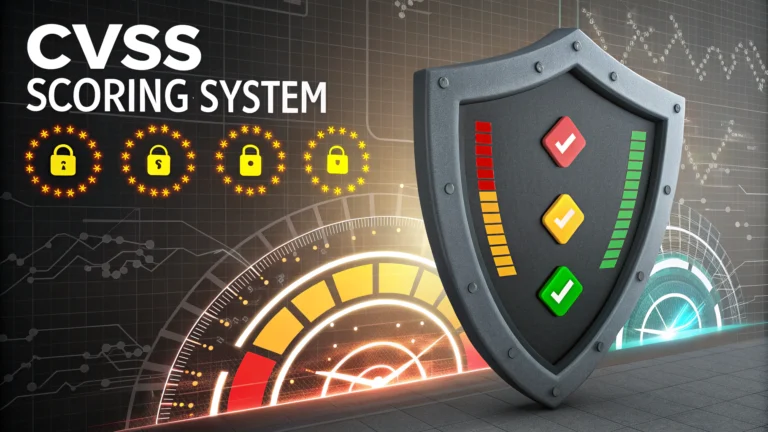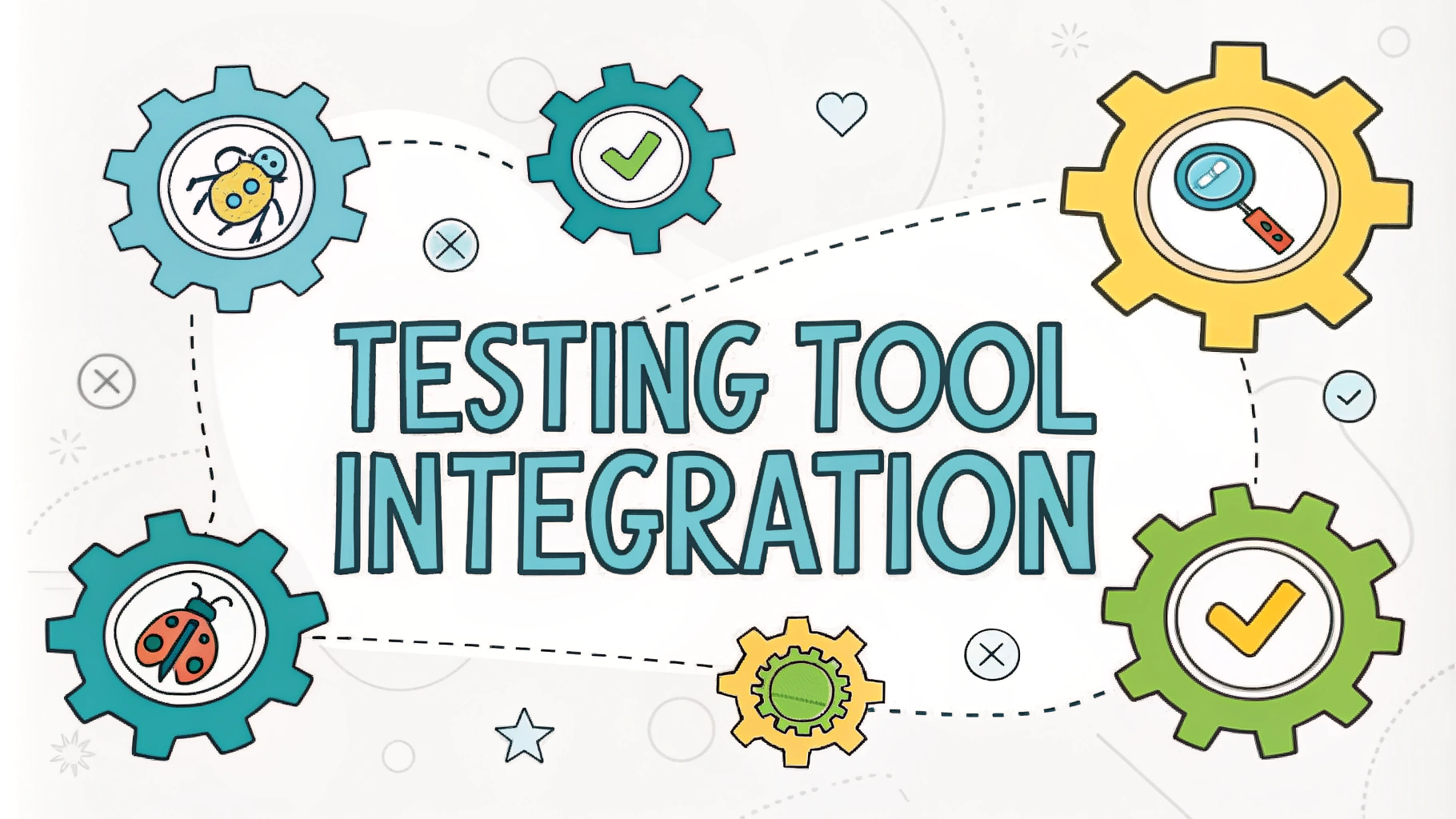The Common Vulnerability Scoring System (CVSS) helps security professionals assess and prioritize security vulnerabilities in computer systems.
This standardized scoring system provides a framework for evaluating the severity and impact of security vulnerabilities, making it easier to allocate resources effectively.
Understanding CVSS scores enables organizations to make informed decisions about which vulnerabilities require immediate attention versus those that can be addressed later in their security maintenance cycle.
CVSS Base Score Components
- Attack Vector (AV): Indicates how the vulnerability can be exploited
- Attack Complexity (AC): Describes the conditions needed for an attack
- Privileges Required (PR): Level of privileges needed to exploit
- User Interaction (UI): Whether user interaction is required
- Scope (S): If the vulnerability impacts resources beyond its security scope
- Confidentiality (C): Impact on information confidentiality
- Integrity (I): Impact on information integrity
- Availability (A): Impact on resource availability
CVSS Score Ranges
| Severity | Score Range |
|---|---|
| None | 0.0 |
| Low | 0.1-3.9 |
| Medium | 4.0-6.9 |
| High | 7.0-8.9 |
| Critical | 9.0-10.0 |
Practical Application Tips
- Use official CVSS calculators from FIRST (Forum of Incident Response and Security Teams)
- Document your scoring rationale for consistency
- Consider temporal and environmental metrics for more accurate assessments
- Regular review and updates of scores as new information becomes available
Common Scoring Mistakes to Avoid
- Overemphasizing impact without considering exploitability
- Neglecting environmental factors specific to your organization
- Inconsistent scoring across similar vulnerabilities
- Not updating scores when new exploit methods are discovered
Tools and Resources
Access the official CVSS calculator at FIRST CVSS Calculator.
The National Vulnerability Database (NVD) provides CVSS scores for known vulnerabilities at nvd.nist.gov.
Making CVSS Work for Your Organization
Establish clear procedures for vulnerability assessment and remediation based on CVSS scores.
Create an internal scoring guide that considers your specific technology stack and business requirements.
Train security teams on consistent CVSS scoring to ensure reliability across assessments.
Integrate CVSS scores with your vulnerability management and incident response processes.
Next Steps in Vulnerability Management
Start by assessing your current vulnerabilities using the CVSS framework and prioritize based on severity scores.
Implement regular vulnerability assessments using CVSS as part of your security program.
Keep documentation of scoring decisions and regularly review for consistency and accuracy.
Advanced CVSS Implementation Strategies
- Develop automated scoring workflows for high-volume assessments
- Create custom scoring templates for industry-specific vulnerabilities
- Implement version control for scoring decisions
- Establish peer review processes for high-impact vulnerabilities
Scoring in Different Environments
Cloud Infrastructure
- Consider shared responsibility models
- Evaluate multi-tenant impacts
- Account for cloud service provider mitigations
IoT Devices
- Factor in physical access requirements
- Consider firmware update capabilities
- Evaluate supply chain implications
Integration with Security Programs
Align CVSS scoring with:
- Risk management frameworks
- Security information and event management (SIEM) systems
- Compliance requirements
- Incident response procedures
Building a Sustainable Vulnerability Management Program
Success in vulnerability management requires continuous improvement and adaptation. Organizations should:
- Maintain updated vulnerability databases
- Regularly validate scoring accuracy
- Foster collaboration between security and development teams
- Leverage automation for efficient assessment and remediation
- Stay informed about emerging threats and scoring methodologies
FAQs
- What is the CVSS (Common Vulnerability Scoring System)?
The CVSS is a standardized method for rating the severity of computer system security vulnerabilities. It provides a framework for communicating the characteristics and impacts of IT vulnerabilities. - What are the three metric groups in CVSS 3.x?
The three metric groups are Base Metrics (representing intrinsic qualities of a vulnerability), Temporal Metrics (characteristics that change over time), and Environmental Metrics (characteristics unique to a user’s environment). - What is the scoring range in CVSS?
CVSS scores range from 0.0 to 10.0, with 10.0 being the most severe. The qualitative severity ratings are: None (0.0), Low (0.1-3.9), Medium (4.0-6.9), High (7.0-8.9), and Critical (9.0-10.0). - How are Base Metrics composed in CVSS?
Base Metrics include Attack Vector, Attack Complexity, Privileges Required, User Interaction, Scope, Confidentiality Impact, Integrity Impact, and Availability Impact. - What role does CVSS play in penetration testing?
In penetration testing, CVSS helps prioritize vulnerability remediation by providing standardized severity scores, enabling organizations to address the most critical security issues first. - Can CVSS scores change over time?
Yes, through Temporal Metrics, CVSS scores can change based on factors like exploit code maturity, remediation level, and report confidence. - How does CVSS handle environmental considerations?
Environmental Metrics modify the base and temporal scores according to the importance of affected IT assets to an organization, considering security requirements for confidentiality, integrity, and availability. - What is the difference between CVSS v3.x and v2.0?
CVSS v3.x introduced new metrics like Scope, refined the scoring algorithm, and provided more precise definitions for metrics compared to v2.0, resulting in more accurate vulnerability scores. - How are CVSS scores calculated?
CVSS scores are calculated using a formula that processes the values assigned to each metric component. The Base Score is calculated first, then modified by applicable Temporal and Environmental metrics. - What organizations use and support CVSS?
CVSS is used by major organizations including NIST, US-CERT, MITRE, and numerous software vendors. It’s maintained by the Forum of Incident Response and Security Teams (FIRST).







